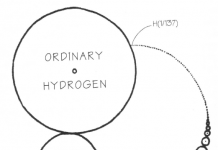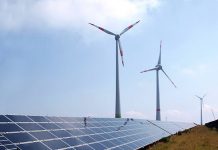Tom Konrad CFA
Disclosure: Long MCQPF
A reader recently said he thought “that the majority of [Atlantic Power Corporation’s (NYSE:AT)] portfolio is in wind power.”
Actually, it’s not even close. While Atlantic Power’s website says “95% of our power is ‘clean power’.” By “clean” they mean “not coal.” They are also indulging in a bit of fudging by counting the size of projects by megawatts (MW) of capacity, which has the effect of decreasing the apparent weight of baseload power generation like coal.
Page 30 of their annual earnings presentation gives a much clearer picture of the their assets, since it breaks out the projects by cash flow (adjusted EBITDA.) Only 21% of Atlantic Power’s 2013 Adjusted EBITDA came from wind.
The following is Alantic Power’s graph of Adjusted EBITDA by project from the earnings presentation. I’ve added notations to each wedge to identify the project fuel by cross referencing it with their project list:
As you can see, coal accounts for 8% of Adjusted EBITDA (not 5%.) It’s not clear how much of the “Other” wedge is natural gas, but if we break out those “other” projects by MW capacity, they are about three quarters natural gas. Of the 76% of cash flow which is broken out by project, 29% is natural gas, 18% is wind, 12% is hydropower, 9% is biomass, and 8% is coal.
The natural gas industry certainly likes to call itself as “clean.” I’m willing to concede that it’s not as bad as coal. I even consider it clean when it’s used in a Combined Heat and Power (Cogeneration) project, as is the case with Capstone Infrastructure’s (TSX:CSE, OTC:MCQPF) natural gas fleet.
Here are some comparable charts from Capstone’s investor fact sheet:

Note that Capstone takes the trouble to break out its Adjusted EBITDA by fuel source. A big chunk of cash flow comes from its water utility, but of the rest, only the 4% slice from district heating does not meet my definition of “clean”. The rest is cogeneration (17%), wind (13%), solar (13%), hydropower (8%), and biomass (6%.) It’s also worth noting that a larger chuck of cash flow has come from renewable power since Capstone acquired Renewable Energy Developers in 2013. I’m sure Capstone’s management will highlight that in their 2013 earnings presentation today. UPDATE: Here is the 2013 chart:

If a power producer claims to be “clean” and does not prominently break out its electricity production, revenue, cash flow, or earnings by fuel source, they’re probably talking about natural gas or nuclear power. Some people consider these clean, but I suspect even Atlantic Power’s management has doubts.
If management really thinks natural gas is clean, why did I have to dig to find out how Atlantic Power fuels most of its generation?
This article was first published on the author’s Forbes.com blog, Green Stocks on March 7th.





